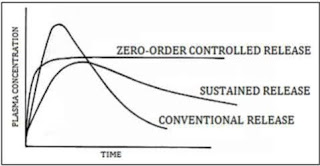As a pharmacist, how can you interpret a drug which is bound to the plasma proteins almost 90%?
As a pharmacist,
understanding the extent to which a drug is bound to plasma proteins is
important for evaluating its pharmacokinetic properties and potential drug
interactions. When a drug is bound to plasma proteins, it is typically not
available for therapeutic action or distribution to tissues. Here's how you can
interpret a drug that is bound to plasma proteins to a high degree, such as
90%:
1. Bioavailability:
The degree of protein binding can affect the bioavailability of a drug, which
refers to the fraction of the administered dose that reaches systemic
circulation. If a drug is highly bound to plasma proteins, it may have a lower
free fraction available for distribution, potentially reducing its
bioavailability.
2. Distribution:
Protein-bound drugs are usually unable to cross cell membranes easily. Consequently,
a drug with a high plasma protein binding may have limited distribution to
tissues, leading to a more confined therapeutic effect or reduced penetration
into specific target sites.
3. Drug
interactions: Drugs that extensively bind to plasma proteins can also interact
with other medications that bind to the same proteins. When two highly
protein-bound drugs are administered together, they may compete for binding
sites, potentially displacing each other and increasing the free concentration
of one or both drugs. This can result in altered pharmacokinetics and an increased
risk of adverse effects or drug toxicity.
4. Clearance
and half-life: The degree of plasma protein binding can influence the drug's
elimination rate and half-life. Highly protein-bound drugs tend to have a
slower elimination rate because they need to dissociate from the protein-binding sites before they can be metabolized or excreted. Consequently, such
drugs may have a longer half-life and require less frequent dosing.
5. Drug
monitoring and dosage adjustments: Monitoring the therapeutic drug levels
becomes crucial for drugs with extensive protein binding. Total drug
concentration alone may not accurately reflect the active concentration
available for therapeutic effect. Measuring the free (unbound) drug
concentration can provide a more accurate assessment of drug exposure. In some
cases, dosage adjustments may be necessary based on the free drug concentration
to achieve the desired therapeutic effect while minimizing the risk of
toxicity.



Comments
Post a Comment
Thanks